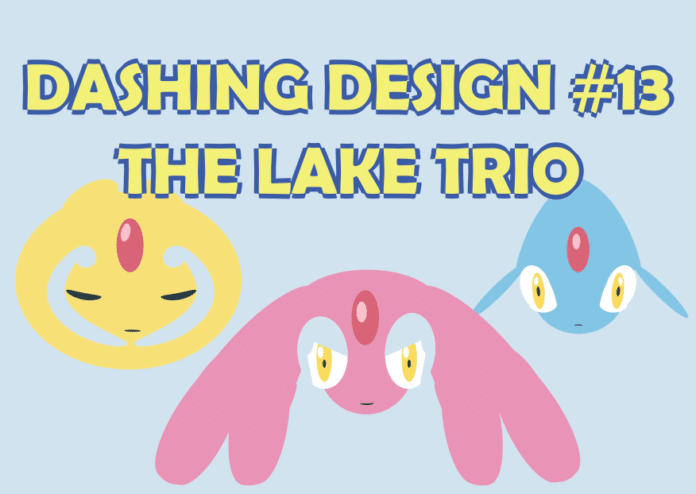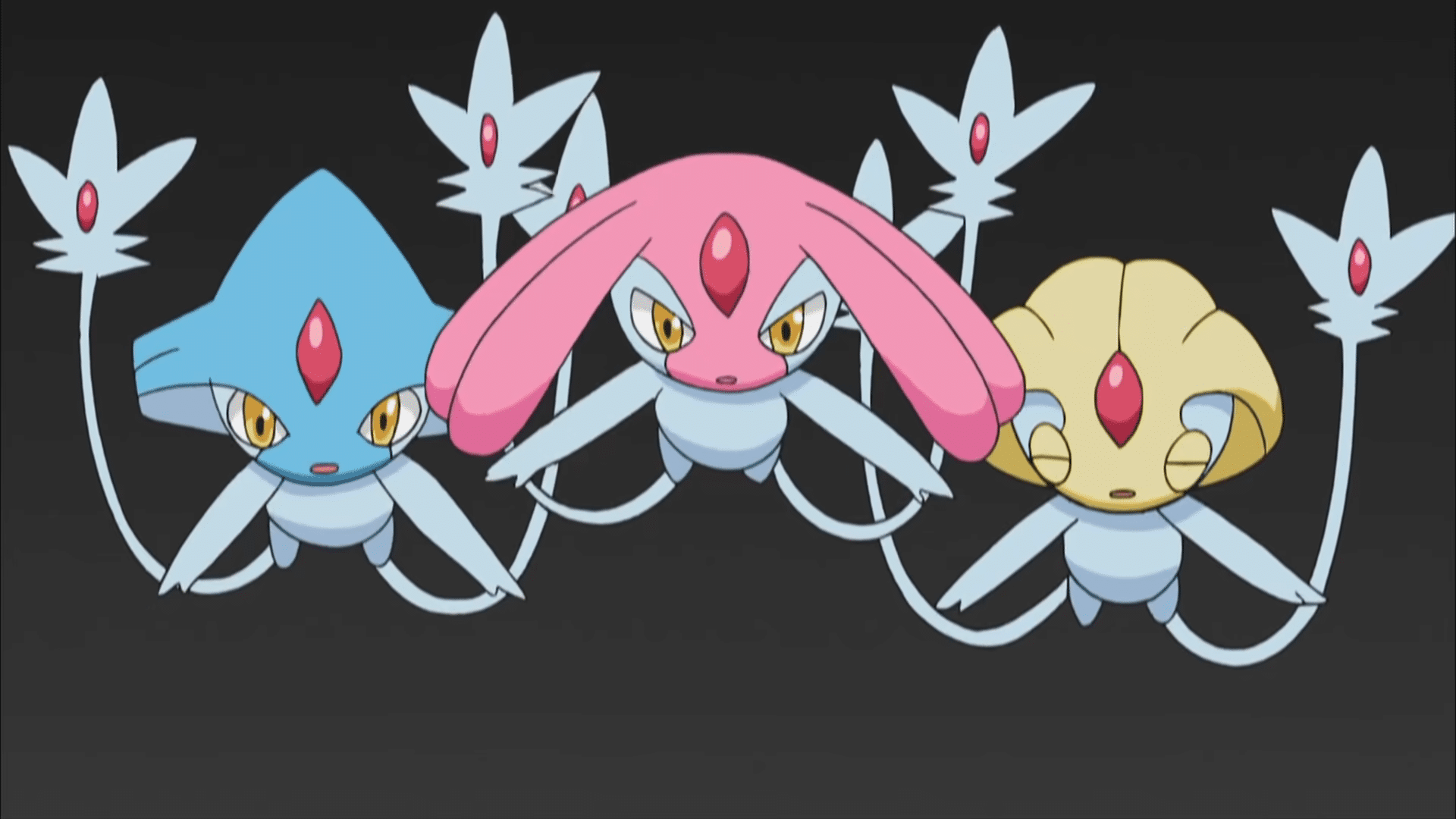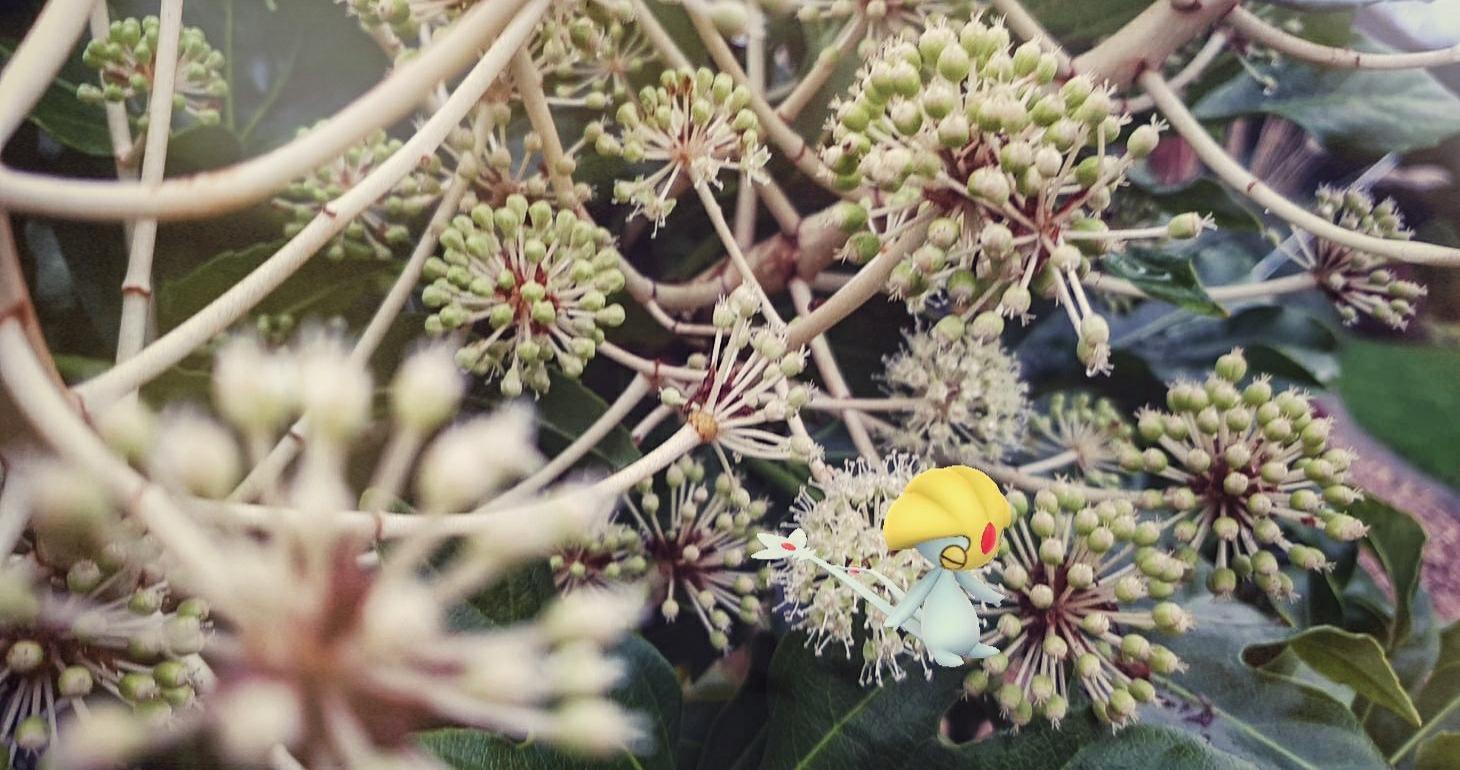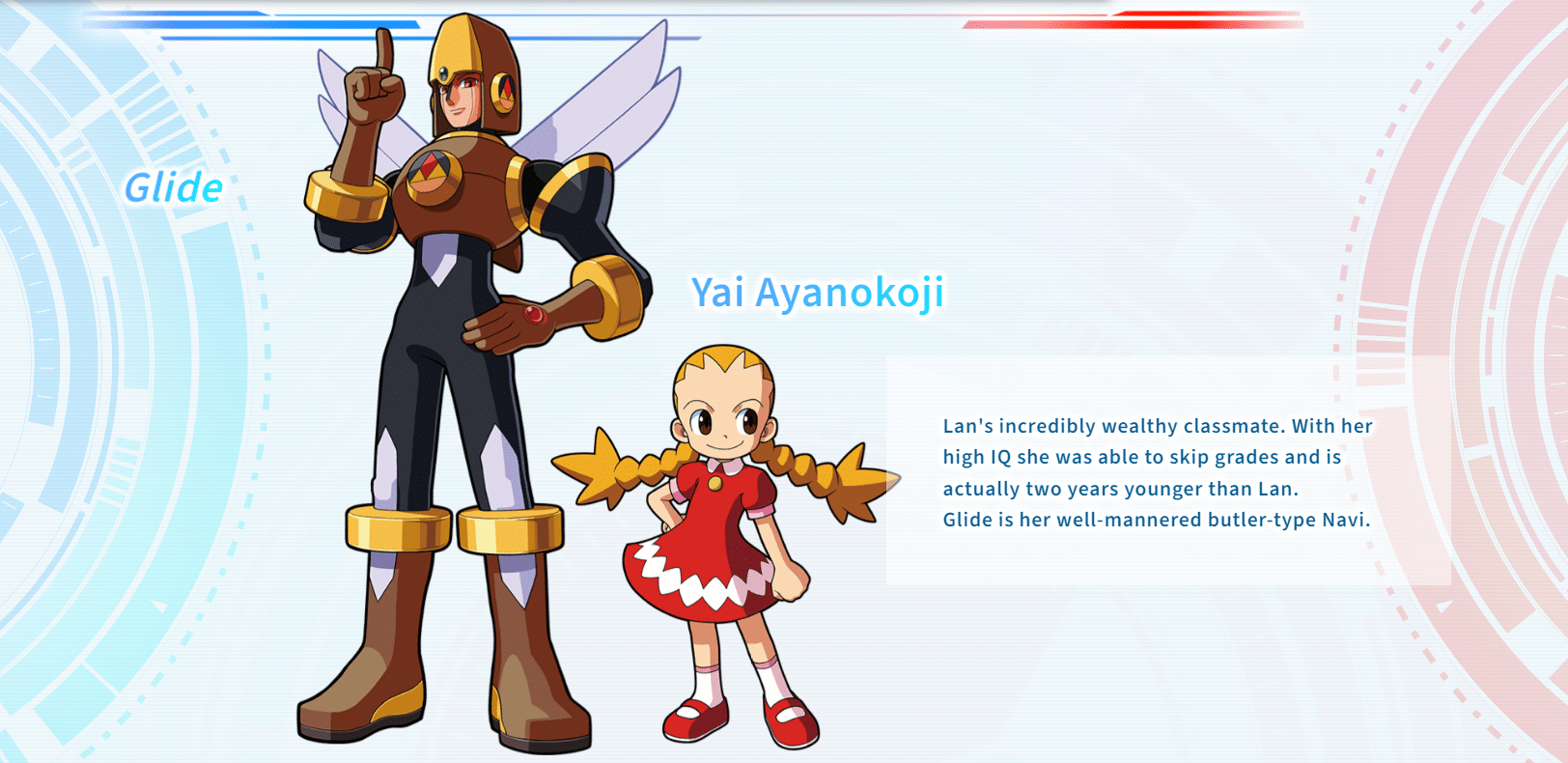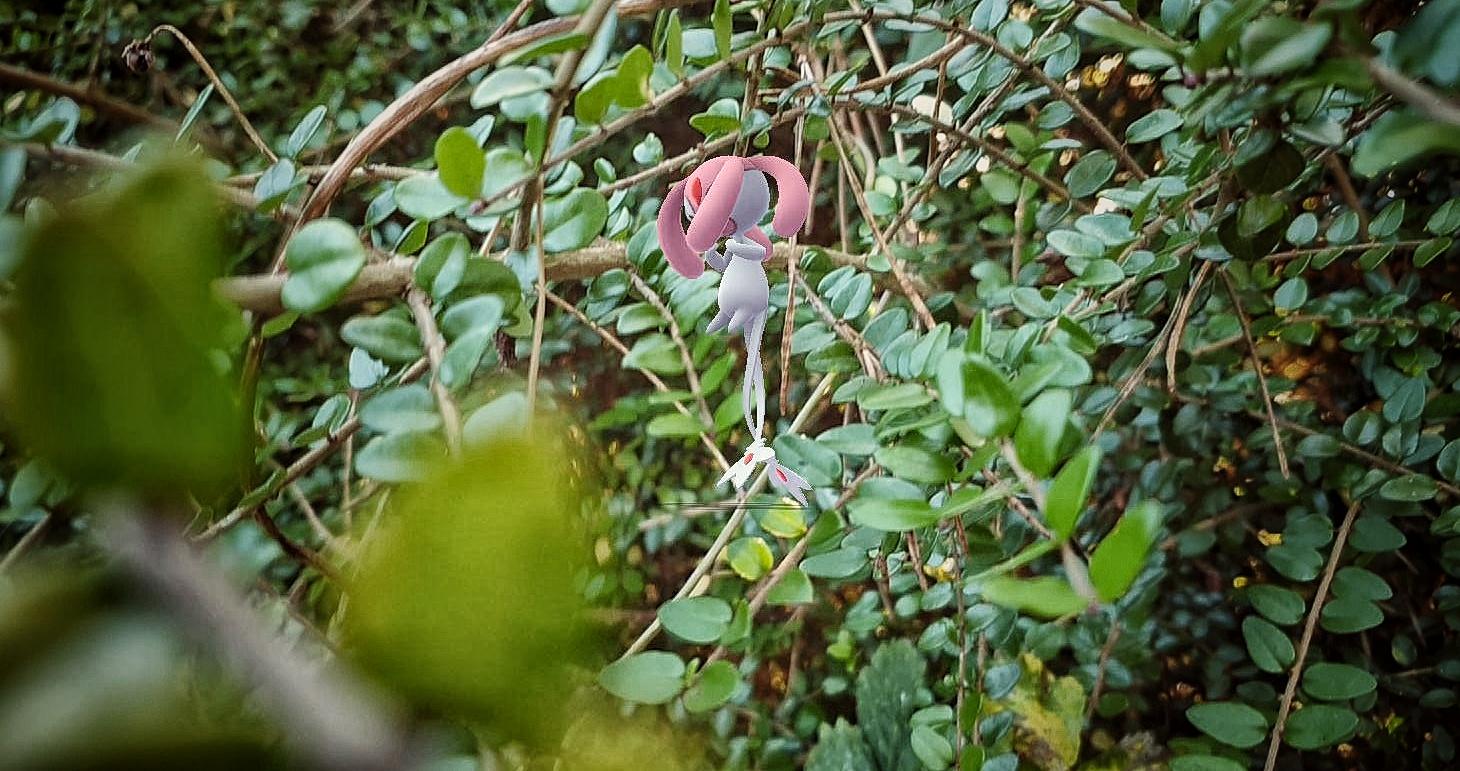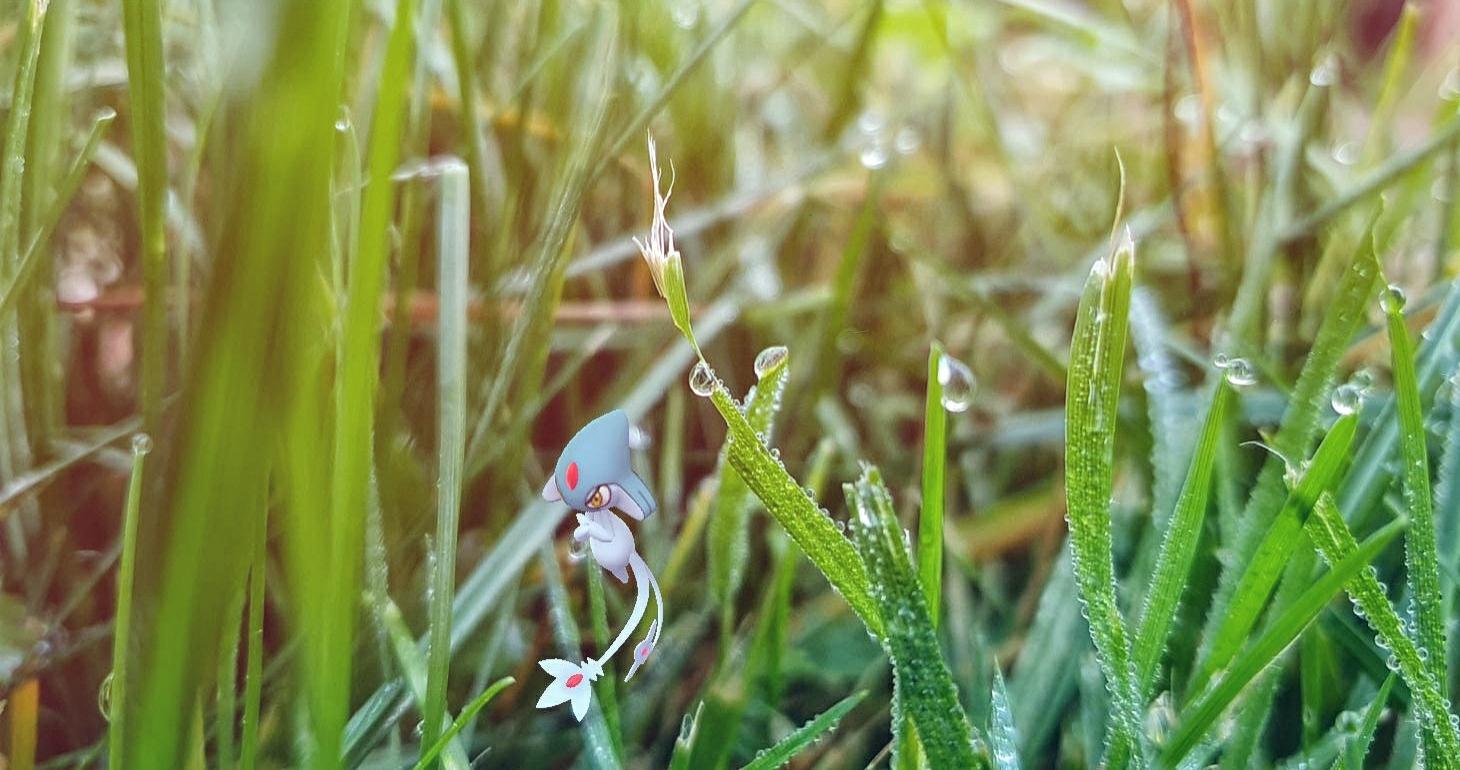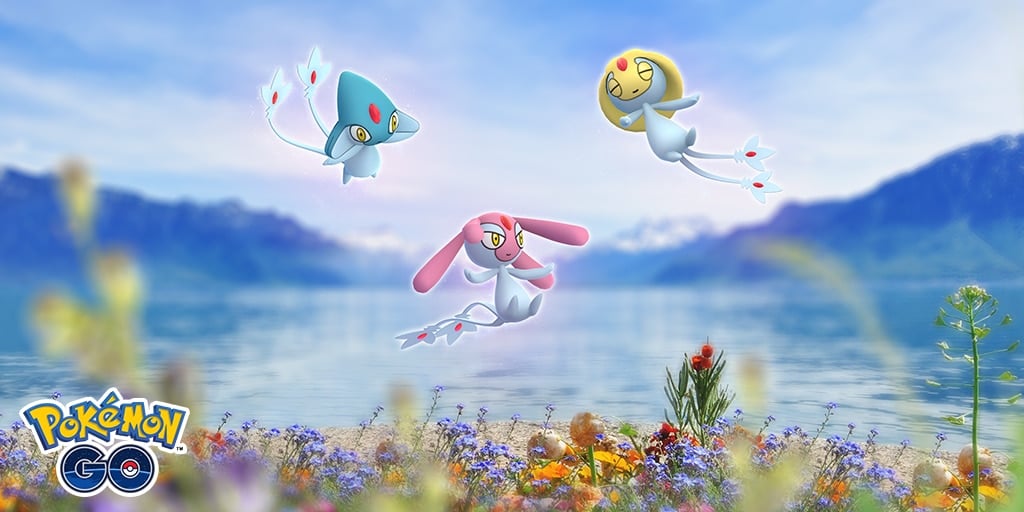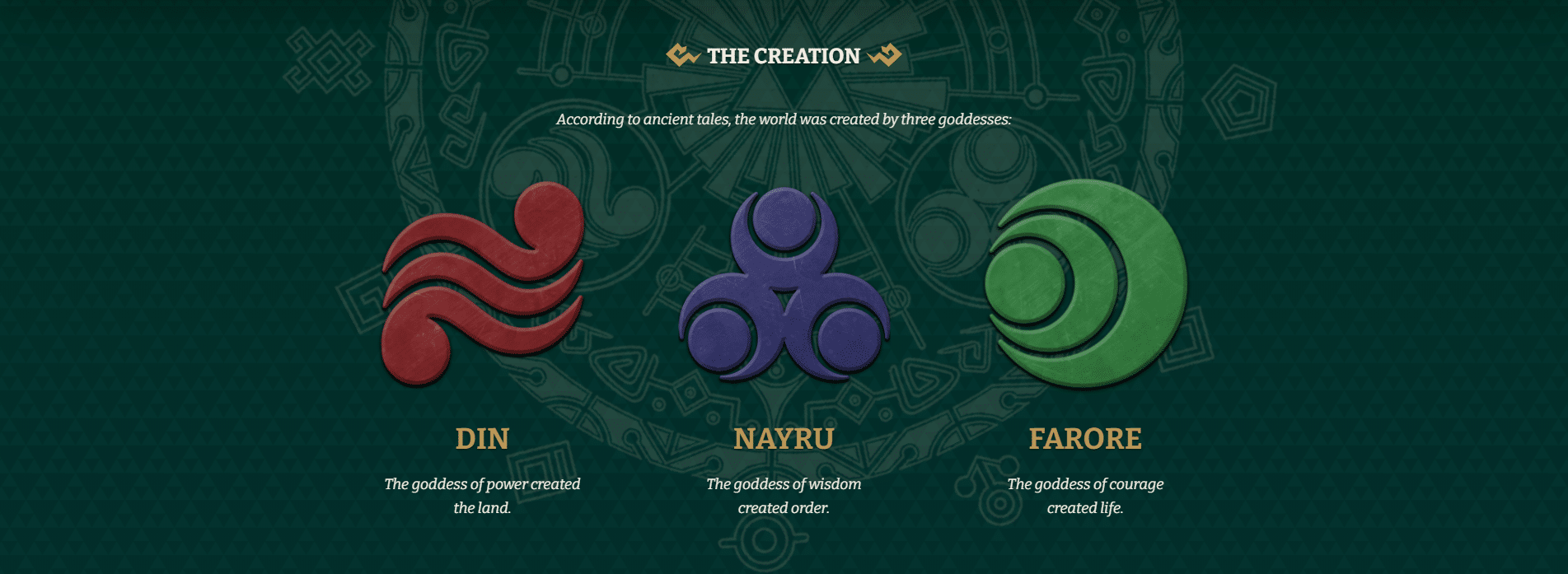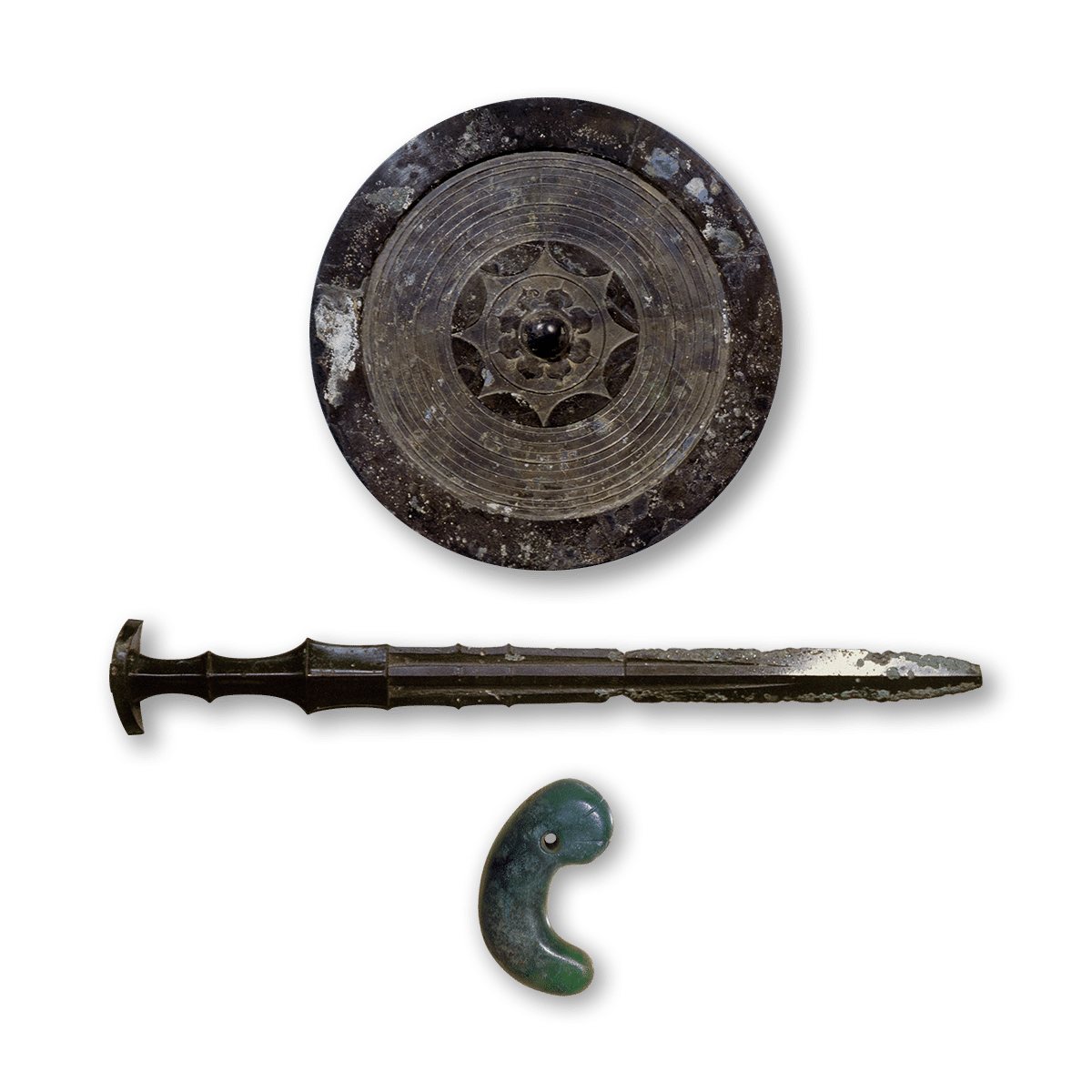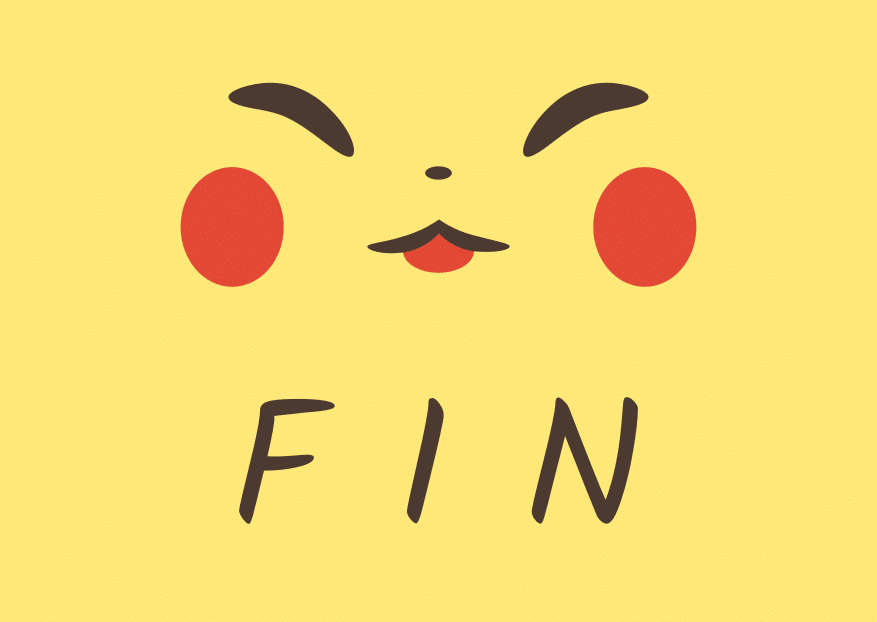Good day, Pokémon Trainers! Have you ever noticed how certain events in Pokémon GO give special attention to a single Pokémon or the community itself tends to hype a new Pokémon up? Have you ever wondered why this Pokémon specifically and what its origins are?
Well, that’s where the Dashing Design series comes in! I’ll be your guide as we take a look at the franchise history, concept, and potential design inspirations of specific Pokémon. We’re fast approaching the GO Tour: Sinnoh season! So to celebrate I thought it would be interesting to dedicate the next few Dashing Designs to the many legendary Pokémon hailing from Sinnoh. With that in mind, let’s start with the Lake Trio, all three of whom were available as raid bosses during the Road to Sinnoh event!
Azelf (Left), Mesprit (Middle), and Uxie (Right). Source: Youtube Clip
The Lake Trio is a given name to Uxie, Mesprit, and Azelf, three closely related Pokémon from Generation Four. Generation Four encompasses the Pokémon Diamond, Pokémon Pearl, Pokémon Platinum, Pokémon Heart Gold, and Pokémon Soul Silver lineup of mainline video games. This generation is noteworthy for bringing Pokémon to the Nintendo DS line of handheld consoles.
As for the trio, while not being mythical Pokémon themselves, they do feel like a continuation of mythicals from prior generations in my opinion. In particular, they share qualities similar to Mew, Celebi, and Jirachi from the previous three generations respectively. All of them being small, cute, floating, Psychic types. Though, of course, the main difference is that the lake guardians are not mythicals and are available in the Diamond, Pearl, and Platinum games by default. As such, they also have the opportunity to be important for those games’ main stories, which is exactly what we see in those games.
The same also applies to the anime, where Azelf, Mesprit, and Uxie play an important role in the Diamond and Pearl anime series. Where their story is closely tied to the main “box art” legendaries, Dialga and Palkia. Instead of being featured in a movie, again unlike what we had seen with most legendaries and mythicals in their respective seasons thus far.
 Uxie
Uxie
Source: AR Image by kittypokemonsalot
The lake trio, their designs, inspiration, and identity, are closely tied to one another. As such, I think it’ll be best if we look at the basic design and etymology of each of the trio separately first. And then deep dive into the design inspirations of all three together afterward!
With that being said, Uxie shares its name in both English and Japanese. The “Xie” part of its name most likely stems from “Pixie” (Meaning small fairy or folklore creature). Though Uxie (along with the others) is more alien and/or cryptid-like than a regular fairytale pixie. As the “U” part of its name, in combination with the other two makes up UMA or Unidentified Mysterious Animal.
In particular, Uxie’s physical design seems to be inspired by the idea of “highly intelligent extraterrestrial lifeforms” that we can see in various forms of media. Uxie symbolizes wisdom, it has a big round head, with a dent in the middle that gives the shape of a brain. In fact, the “Xie” in Uxie could also sound like “see”. “Sight” is often associated with wisdom. Someone smart enough to plan things out for the future is considered to have foresight, as an example.
There is a very important conceptual reason for this which we will take a look at later. But all this also harkens to similar aliens in fiction such as those seen in Mars Attack! and Ben10. Also having a round head and/or a big forehead is seen as a sign of intelligence in many cultures. It’s a common trope in Japanese media such as games and anime as well. A character with such qualities that immediately come to my mind is Yai, from Megaman Battle Network.
Yai from MMBN. Source: Official Site
 Mesprit
Mesprit
Source: AR Image by kittypokemonsalot
Mesprit (more directly named in Japan as Emrit) is our second Pokémon for today. “Esprit” or just “rit” in Japanese could stem from two words. Either Sprite or Spirit. “Sprite” is similar to Pixie, in that it denotes fairy-like creatures. “Spirit” on the other hand more commonly refers to ghosts or ghost-like ethereal creatures. However, we can still tie it back to fairies as fairies are often referred to as “spirits of the forest”. Also, Mesprit in lore represents emotions. And terms such as “Keep up the good spirit.” and “Being in good spirit.” harken to being positive and energetic emotionally.
As for the “M”, it once again connects to the other two’s names to make UMA. As for what kind, admittedly it’s a bit of a stretch so stay with me, the Predator. It fits in terms of physical design, as Mesprit has hair-like protrusions on its head. In particular, they look similar to braids or dreadlocks. Just like those seen in members of the Predator species.
Predator (1987) Poster. Source: Official Site
Also in terms of concept, Mesprit is the “Emotion Pokémon”. And in terms of aliens in fiction, especially during the time of the Predator’s inception, it stood out. Because most other aliens were more so “forces of nature” threats during that time. Either being complete monsters or being highly intelligent and unemotional. In contrast, Predators were depicted as a more emotional and culture-bound species. Following strict honor codes and even working together with humans in some movies. So I can see some basic similarities.
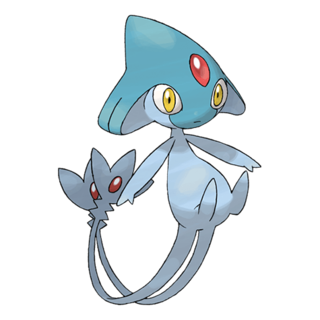 Azelf
Azelf
Source: AR Image by kittypokemonsalot
We reach the final one of the trio with Azelf. The “elf” in Azelf refers to, well, Elves. We’re prone to thinking of the Tolkien-esque pretty, humanoid fantasy creatures or Santa’s helpers when we think of elves nowadays. However, historically the term “Elf” was a lot broader. And were not too dissimilar from fairies as supernatural creatures capable of both benevolence and mischief. “zelf” taken together also sounds similar to “self”. As in referring to your own self. This could be seen as a short form of “Self-Confidence”, as Azelf represents willpower.
Finally, the “A” in Azelf completes UMA. As mentioned before UMA stands for Unidentified Mysterious Animal. It’s a term similar to UFO and refers to aliens, cryptids, and the like. So I’ve been referring to fairies and aliens specifically since those are what seem to be most closely connected to the trio’s etymological and design inspirations respectively. However, I believe their overall physical design takes from the idea of supernatural creatures in general.
With that being said, Azelf itself seems to have a pointy, dome-like structure for its head. Which is also a decently popular design for aliens. In particular, Chaos from the Sonic franchise is what immediately comes to my mind.
Source: Pokémon GO Event Banner
Alright, so I’m sure you’ve noticed that while talking about the design of these three I’ve been using the term “physical design”. Because hoo boy, are their conceptual inspirations quite different. Buckle up because this rabbit hole goes far deeper than I was initially prepared for!
Now, in Sinnoh, the lake trio are seen as deific entities that brought three human qualities/virtues into the world. Uxie bringing Wisdom, Mesprit bringing Emotions, and Azelf bringing Willpower respectively. It’s worth mentioning that The Pokémon Company is partly owned by Nintendo. Ruminating on all this, my thoughts immediately went to the three Goddesses from another Nintendo franchise, The Legend of Zelda.
The Three Goddesses from TLOZ. Source: Official Site
So does that mean the lake trio pulls inspiration from The Legend of Zelda? Well, it could be. But I personally believe this is more so the result of pulling from the same source. I won’t go into too much detail here since this is a Pokémon discussion, not a Zelda one. But suffice it to say, the Zelda franchise takes heavily from the Japanese faith of Shinto. And I believe the lake trio pulls inspiration from the same source.
Three Deities
I was initially trying to find out if there were any specific mention of three deities that represent human qualities in some form. However, what I found was that the number three is quite prevalent in Shinto mythology. To start, Izanagi, one of the two deities tied to the myth of Japan’s creation once went to the underworld, Yomi to look for his wife, Izanami. After returning, he took a bath to cleanse himself of the impurities of Yomi. And from his cleansing three important deities were born. Amaterasu, the Goddess of the Sun and Chief deity of heaven, Tsukuyomi, the deity of the moon, and Susanoo, the God of the sea and the storm.
Of the three, Tsukuyomi has the least written record to pull from. With one story claiming that Tsukuyomi and Amaterasu once went to visit the Goddess of food Ukemochi. Tsukuyomi was disgusted by her and had slain her, because of which Amaterasu was distraught, and the moon and the sun were separated forever. Instead, we find Ōkuninushi, God of the Earth and its previous ruler, along with Amaterasu and Susanoo, representing the myths surrounding the cycle of imperial succession in Japan.
We can go even further. Susanoo was wrathful and his wailings would create storms, thus he was banished from heaven. Before leaving he went to visit his sister, Amaterasu. Amaterasu, wishing to test her brother came in disguise and challenged Susanoo, whoever could create three Goddesses first would win. Several Gods and Three Goddesses were born of this challenge and Amaterasu conceded that the Goddesses were Susanoo’s. These Goddesses were Ichikishimahime, Tagitsuhime, and Takiribime. So as you can see, important deities in Shinto often seem to come in threes.
Three Treasures
Artistic Interpretation of The Three Treasures. Source: By 菊竹若狭 Collected from Wikipedia
We haven’t really pinpointed which trio the lake trio is inspired by directly yet. For that, we need to press on a bit further with Amaterasu and Susanoo’s story. After Amaterasu conceded and claimed Susanoo was the victor of their challenge, Susanoo went into a victorious rage and destroyed much of Amaterasu’s palace. For this, Susanoo was finally banished and in her sorrow, Amaterasu hid herself in a cave.
Magatama
Without the Goddess of the sun, nothing could flourish so the other deities hatched a plan to lure her out. First, they held a party near the cave. When she got curious Magatama were used to guide Amaterasu out of the cave, thus it represents benevolence and is tied to its creator deity Tamanoya no Mikoto. Of the lake trio, we can attest this to Mesprit, as its hair braids look similar to the Magatama. And it is the emotional one of the trio.
Yata no Kagami
After Amaterasu came to the door of the cave a circular bronze mirror, Yata no Kagami was placed in front of her. On which she saw her own radiance and remembered her own importance thus returning to her place in heaven. Thus the mirror represents wisdom and honesty and is tied to Amaterasu. Of the lake trio, this fits Uxie the best as it represents wisdom and its circular head is similar to the circular mirror.
Kusanagi-no-Tsurugi
But what of Susanoo? He had his own trials after being banished to the Earth. Having to defeat the multi-headed serpent Yamata-No-Orochi. He found the legendary Grass-Cutting Sword, Kusanagi-no-Tsurugi. Which he offered to Amaterasu as a peace offering. Thus this sword represents Valor, as Susanoo showed great courage in defeating the Orochi and apologizing to his sister. Of the lake trio, this is obviously tied to Azelf which represents willpower. And also has a pointy head, like a sword. These three combined make up the imperial regalia of Japan and legitimize the Emperor’s rule. And are the key inspirations for the lake trio as well I believe.
And there we go! The first group of Sinnoh legendaries to be covered in a Dashing Design article. I thought we were starting off easy only to realize how wonderfully deep the inspiration for these three unassuming mons go. I haven’t even covered everything exhaustively. For example, the lakes each member of the trio is found in are also named after the qualities each of the Pokémon represents. Also, the gem on their forehead represents the third eye.
And why do all three have two tails? Are they also partly inspired by the Bakeneko? As a final note, most of the Shinto stories I provided are simplified versions of the most common form of them. In reality, there are multiple sources and variations between them. But by the end of the day, the lake trio hold a lot of depth in their decidedly small and simple designs.
And this is why, the Lake Trio’s designs, are quite dashing!
Goodbye for now, Pokémon trainers. Priom-out!

